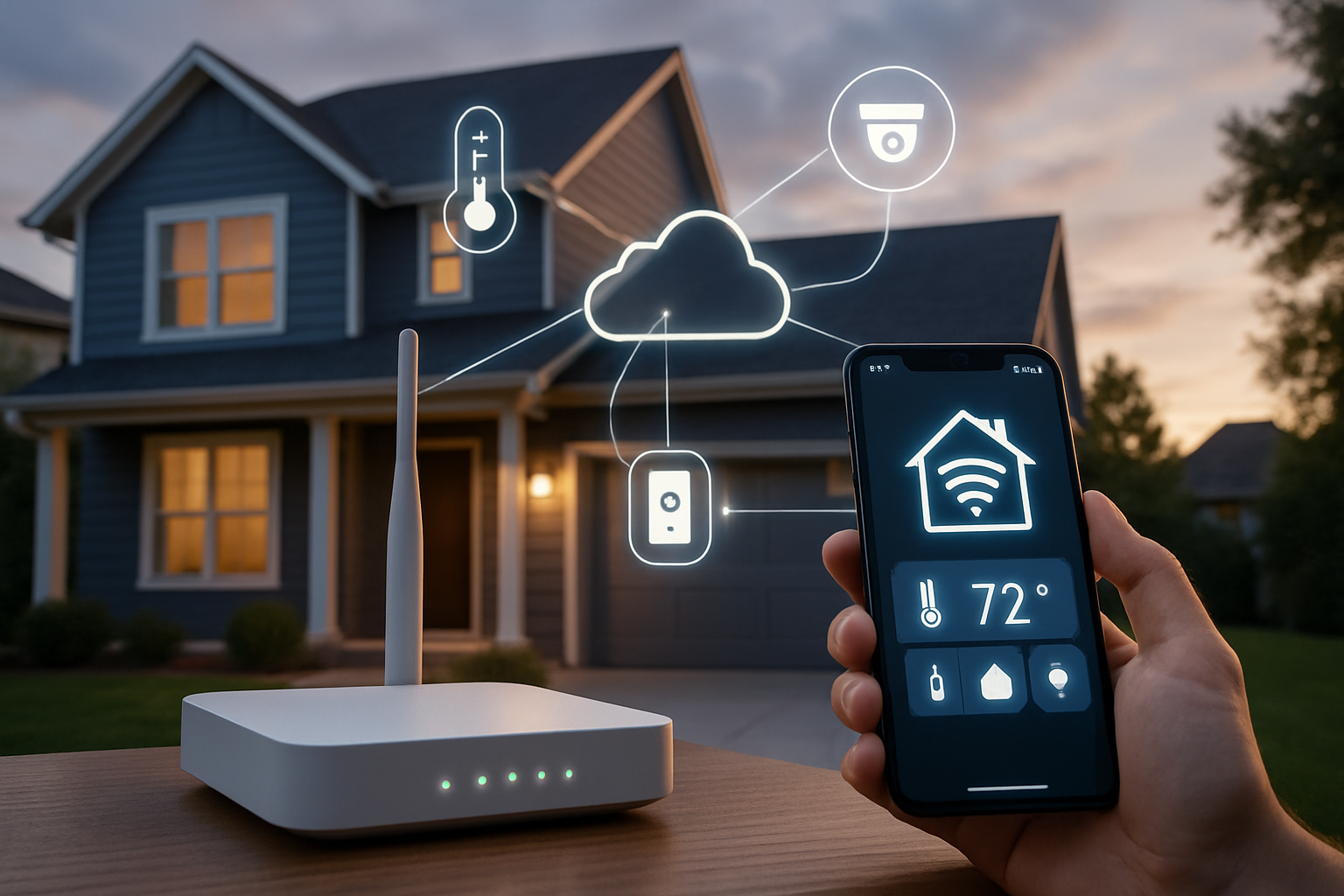Smart Home Solutions for Modern Living: A Comprehensive Guide
Smart home solutions integrate technology into daily routines, from automated lighting and climate control to security systems and appliances. These systems aim to improve energy efficiency, convenience, and comfort in modern households. Read to learn more about smart home solutions.

What Defines a Smart Home Solution?
Smart home solutions encompass networks of devices, appliances, and systems that communicate with each other and can be remotely controlled. At their core, these solutions involve internet-connected devices that enable automation and remote operation of various home functions. The foundation typically includes a central hub or ecosystem that coordinates multiple smart devices—from lighting and thermostats to security cameras and entertainment systems. Modern smart homes leverage artificial intelligence and machine learning algorithms to learn user preferences and behaviors, allowing for truly personalized experiences that anticipate needs and adjust accordingly. This interconnected approach transforms conventional homes into responsive environments that adapt to residents’ lifestyles.
Essential Components for Building a Smart Home
Creating a functional smart home begins with selecting the right components that work together seamlessly. The central nervous system of any smart home setup is the hub or controller, which allows different devices to communicate despite varying protocols. Popular options include Amazon Echo (Alexa), Google Nest Hub, or Apple HomePod (HomeKit). Smart lighting systems from brands like Philips Hue, LIFX, or Wyze provide programmable illumination that can change brightness, color, and timing based on preferences or activities. Intelligent climate control through devices such as Nest, Ecobee, or Honeywell thermostats optimizes heating and cooling while reducing energy consumption. Security elements—including doorbell cameras, motion sensors, and smart locks from companies like Ring, SimpliSafe, or August—form an integrated safety network. Finally, entertainment systems featuring smart TVs, speakers, and streaming devices create immersive audio-visual experiences that can follow users throughout their homes.
Key Benefits of Smart Home Integration
The adoption of smart home solutions offers numerous tangible benefits that extend beyond novelty. Energy efficiency stands as one of the most significant advantages—smart thermostats, lighting, and appliances can reduce utility bills by 10-25% through optimized operation and scheduling. Enhanced security through integrated cameras, motion detectors, and automated lighting provides both actual protection and peace of mind, with many systems offering real-time alerts and remote monitoring capabilities. Accessibility features particularly benefit elderly residents and those with mobility challenges, as voice commands and automated operations reduce physical demands. Convenience remains a primary motivation for many homeowners, as routine tasks like adjusting temperatures, turning off lights, or securing doors can be automated or executed remotely. Additionally, some insurance companies offer premium discounts for homes equipped with smart security and safety features, reflecting the reduced risk profile these technologies provide.
Common Challenges When Implementing Smart Home Technology
Despite their benefits, smart home implementations can present certain challenges that homeowners should consider. Compatibility issues between devices from different manufacturers remain a persistent concern, though industry standards like Matter and Thread are working to address this fragmentation. Privacy and security vulnerabilities require attention, as internet-connected devices can potentially expose personal data or provide entry points for cyberattacks if not properly secured. The learning curve associated with setting up and managing multiple smart devices can be steep for less tech-savvy users. Additionally, reliability concerns arise when systems depend on consistent internet connectivity or cloud services that may experience outages. Many homeowners also express concern about the potential obsolescence of expensive smart devices as technology rapidly evolves, leading to hesitation about substantial investments in current-generation products.
Cost Considerations for Smart Home Solutions
Smart home technology spans a wide price spectrum, allowing homeowners to implement solutions based on their budget and priorities. Initial investment costs vary significantly depending on the scope and quality of the implementation.
| Component Category | Entry-Level Cost | Mid-Range Cost | Premium System Cost |
|---|---|---|---|
| Smart Hub/Controller | $30-50 | $100-200 | $200-300+ |
| Smart Lighting (starter kit) | $25-60 | $100-200 | $200-500+ |
| Smart Thermostat | $80-130 | $150-250 | $250-350 |
| Security Cameras (per camera) | $25-80 | $100-200 | $200-400+ |
| Smart Door Lock | $100-150 | $200-250 | $250-400 |
| Complete Home System | $200-500 | $1,000-3,000 | $5,000-20,000+ |
Prices, rates, or cost estimates mentioned in this article are based on the latest available information but may change over time. Independent research is advised before making financial decisions.
Beyond initial purchase costs, homeowners should consider ongoing subscription fees for certain services (particularly security monitoring and cloud storage), potential installation expenses for complex systems, and expected lifespans of devices when calculating the total cost of ownership. Many homeowners find success with a staged implementation approach, starting with core components like a hub and several key devices, then expanding the system over time as budget allows.
Planning Your Smart Home Solution Strategy
Developing an effective smart home implementation requires thoughtful planning and prioritization. Begin by identifying your primary objectives—whether security, convenience, energy savings, or entertainment—and select technologies that directly address these needs. Research ecosystem compatibility carefully to ensure your devices will work together; major platforms like Amazon Alexa, Google Home, and Apple HomeKit each have distinct advantages and limitations. Consider your technical comfort level and available time for setup and management when choosing between DIY systems versus professionally installed solutions. Future-proofing your investment involves selecting devices that support industry standards and come from companies with strong update track records. Creating a phased implementation plan allows for strategic upgrades while spreading costs over time. Many homeowners find success by starting with a central ecosystem and adding compatible devices as needed, rather than pursuing a complete system installation all at once.
Smart home technology continues to evolve rapidly, offering increasingly sophisticated solutions for modern living. By understanding the components, benefits, challenges, and costs involved, homeowners can make informed decisions about implementing systems that truly enhance their living experience while providing tangible benefits in efficiency, security, and convenience.




